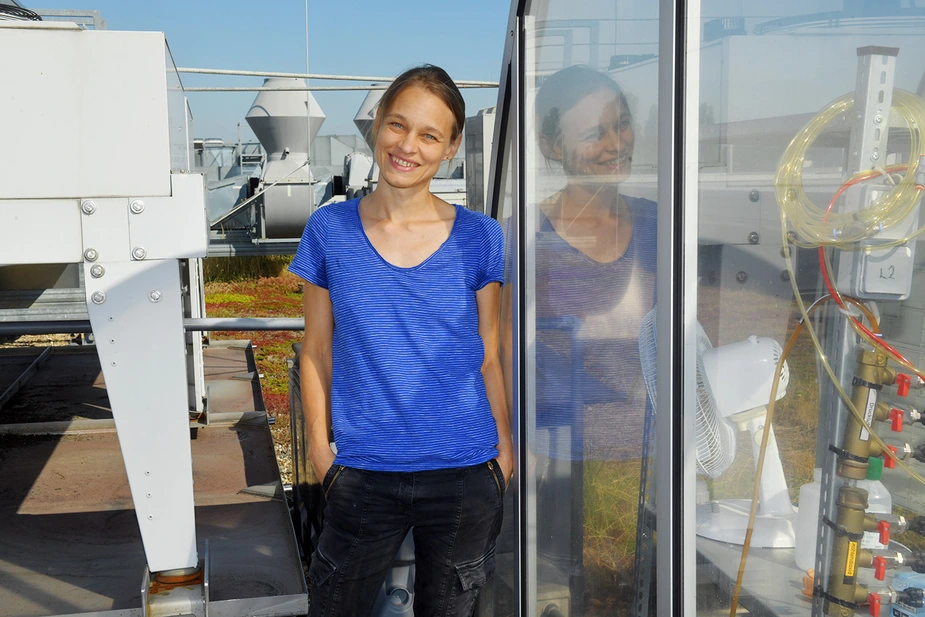Researching bacteria
Heike Enke uses microbes to extract substances against cancer
It all started with trips to the nearby lake Wannsee a decade and a half ago. That day, Heike Enke forgot to bring her swim wear. However, she did bring a 20-litre jerry can, which she filled with water and carried back to her institute in Invalidenstrasse in Berlin, where it soon started to exude an abominable smell.
The then-PhD biology student and today’s scientific director of Adlershof-based Cyano Biotech GmbH was on a hunt for the green goo that takes over lakes during the hot season – sometimes to the point where the lake is closed for swimmers for danger of poisoning. Contrary to common belief, the blue-green algae are not primitive plants but, in fact, single-cell organisms. Scientists know them as cyanobacteria, which Heike Enke’s company uses to develop a new cancer drug.
During Enke’s entire career, she has been fascinated by the tiny creatures to which she has dedicated all of her research passion. Cyanobacteria have been home to this earth for 3.5 billion years. They were here before the dinosaurs and will probably also outlive mankind. They thrive in wet as well as dry environments, sweet and salty water, in the snow as well as the desert. Enke says that this survival skill set is thanks to their ability to produce “an incredible range” of bioactive substances, equipping them to meet the challenges and hindrances of various ecosystems.
As early as her dissertation, Enke toyed with ideas how to utilise cyanobacteria’s multifarious talents. Is it possible to control the synthesis of bioactive substances inside the cyanobacteria’s cell “to produce a molecule that is shaped by us”? For two years now, Cyano Biotech has been working on a procedure that stimulates bacteria to produce a toxin capable of destroying cancer cells in the human body. Enke says that she has successfully conducted lab tests in cooperation with pharmaceutical companies, who are interested in her
ideas.
The breeding station is the centrepiece of the company headquarters, which are located on the third floor of the Centre for Biotechnology and the Environment on Magnusstrasse in Adlershof. The shelves are tightly packed with different-sized glass vessels, the contents of which gives off a green, vibrating shimmer.
According to Enke, the shelves contain “one of the largest stem collection in the world” with over 4,000 strains of bacteria: “We also still have those from the Wannsee.” Cyanobacteria are low-maintenance. Neonlight and a few nutrients are all they need for growing. They move house every two weeks; first from a small to a larger glass bulb, then into a canister. Finally, a centrifuge separates the liquid from the dry components, which the agent is then extracted from.
When we ask about her spare time, the Berlin-Tempelhof-native answers: “I don’t really have time.” Judo, horse riding, playing the piano – for the time being, these will stay things of the past for the 43-year-old mother of four.
Von Winfried Dolderer für Adlershof Journal
